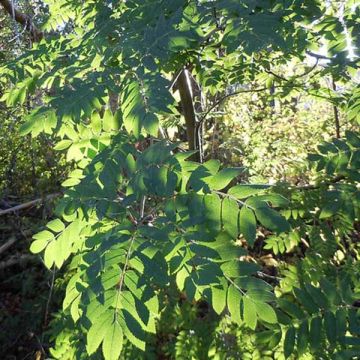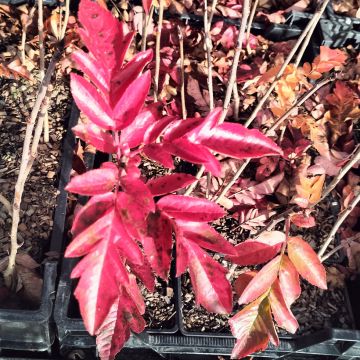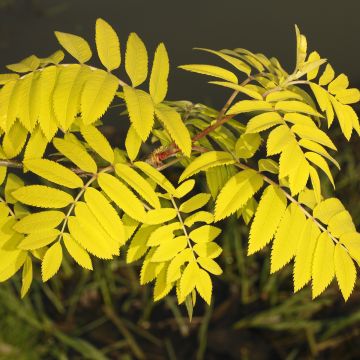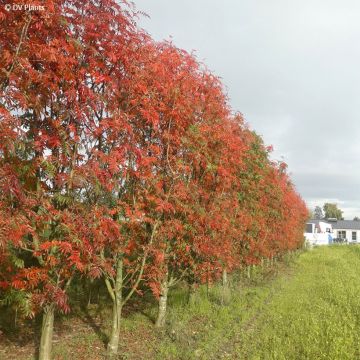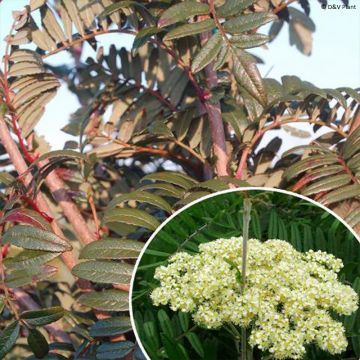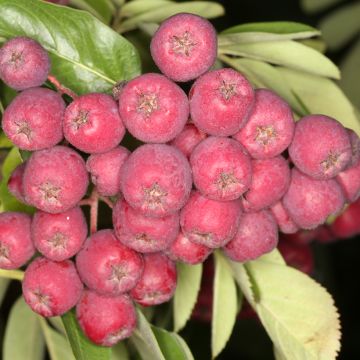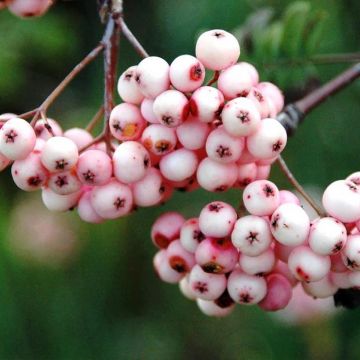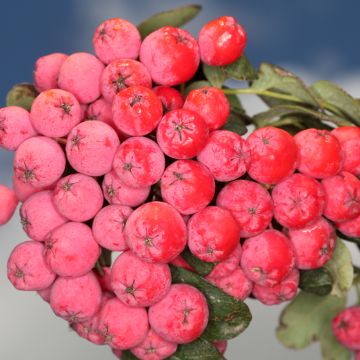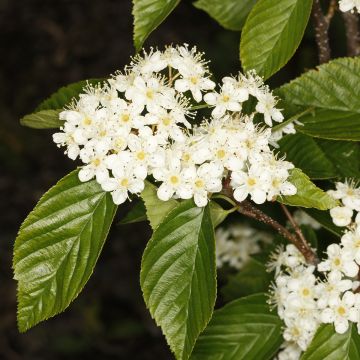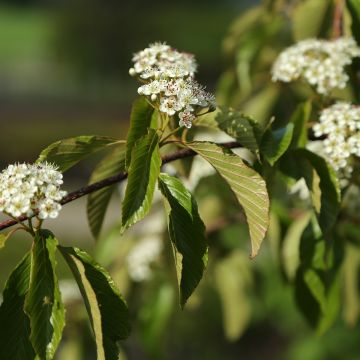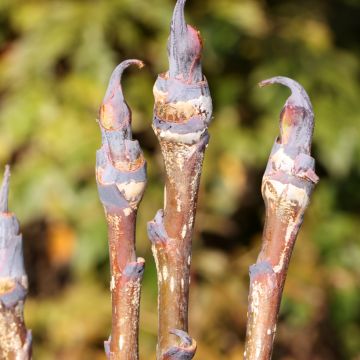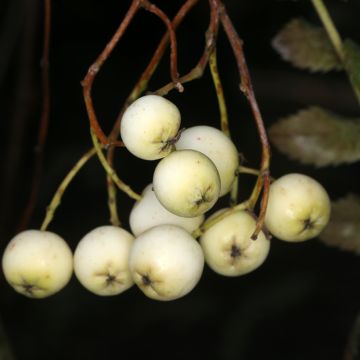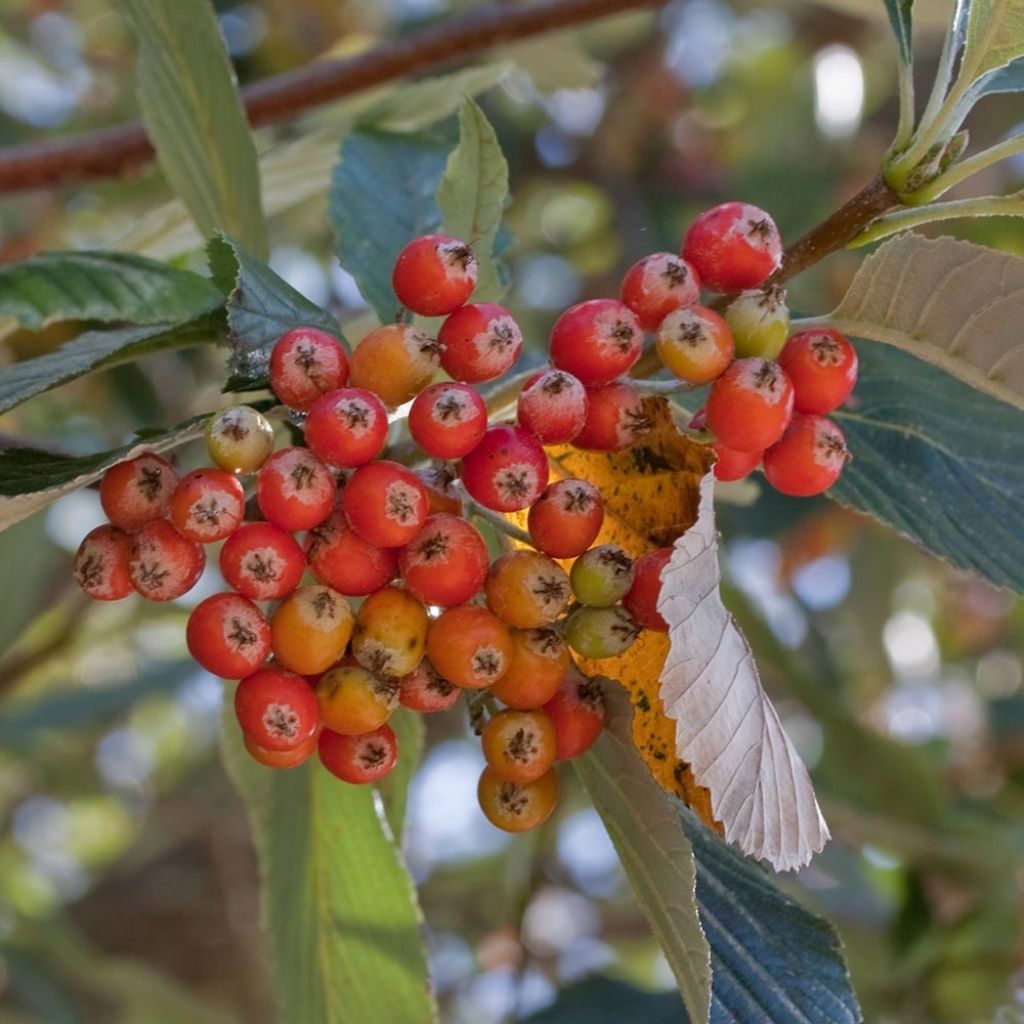

Sorbus aria
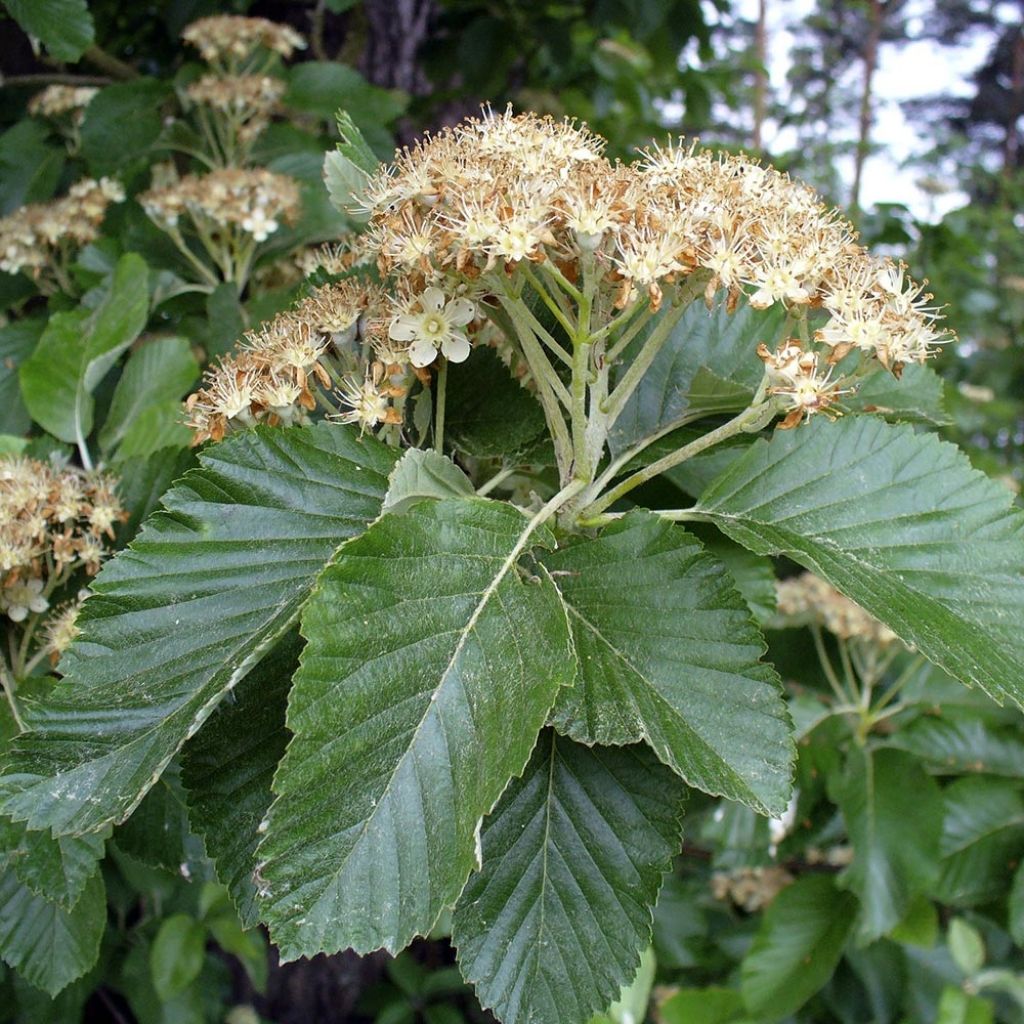

Sorbus aria
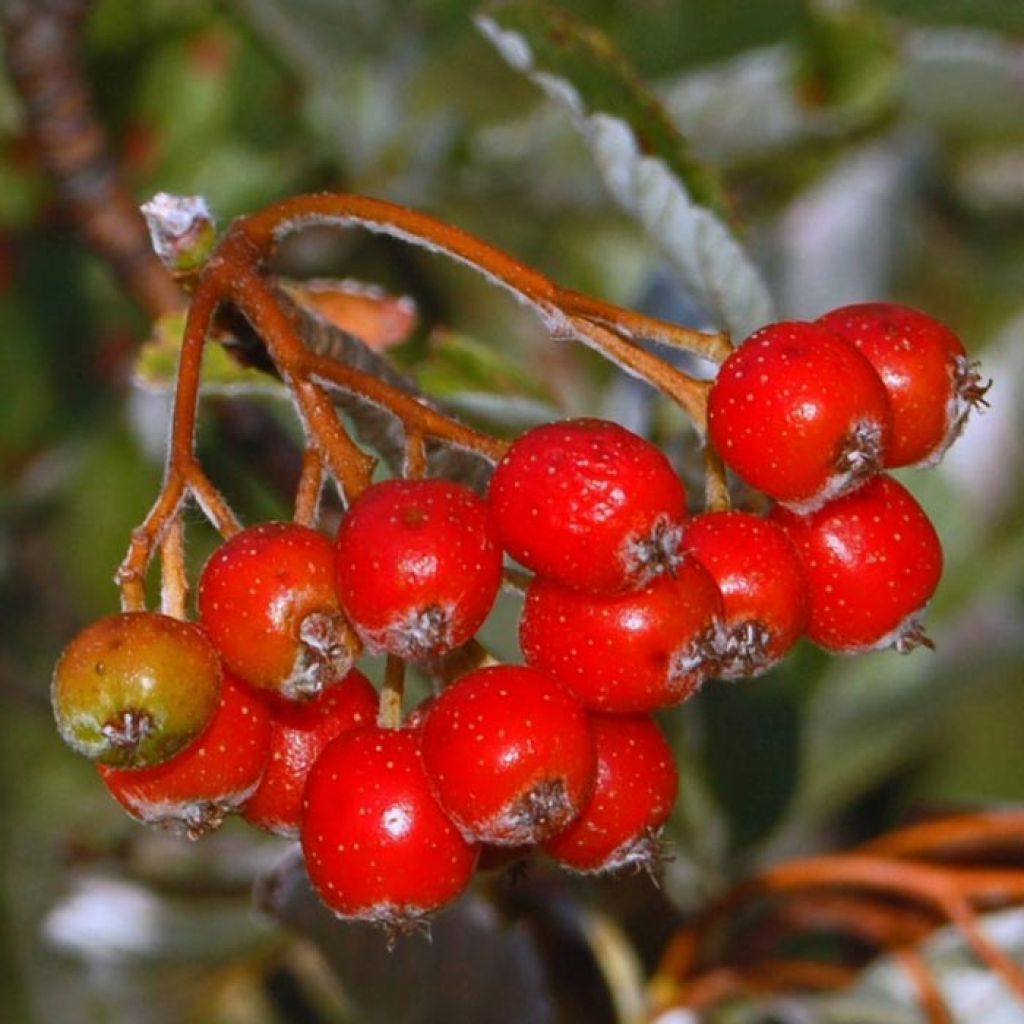

Sorbus aria
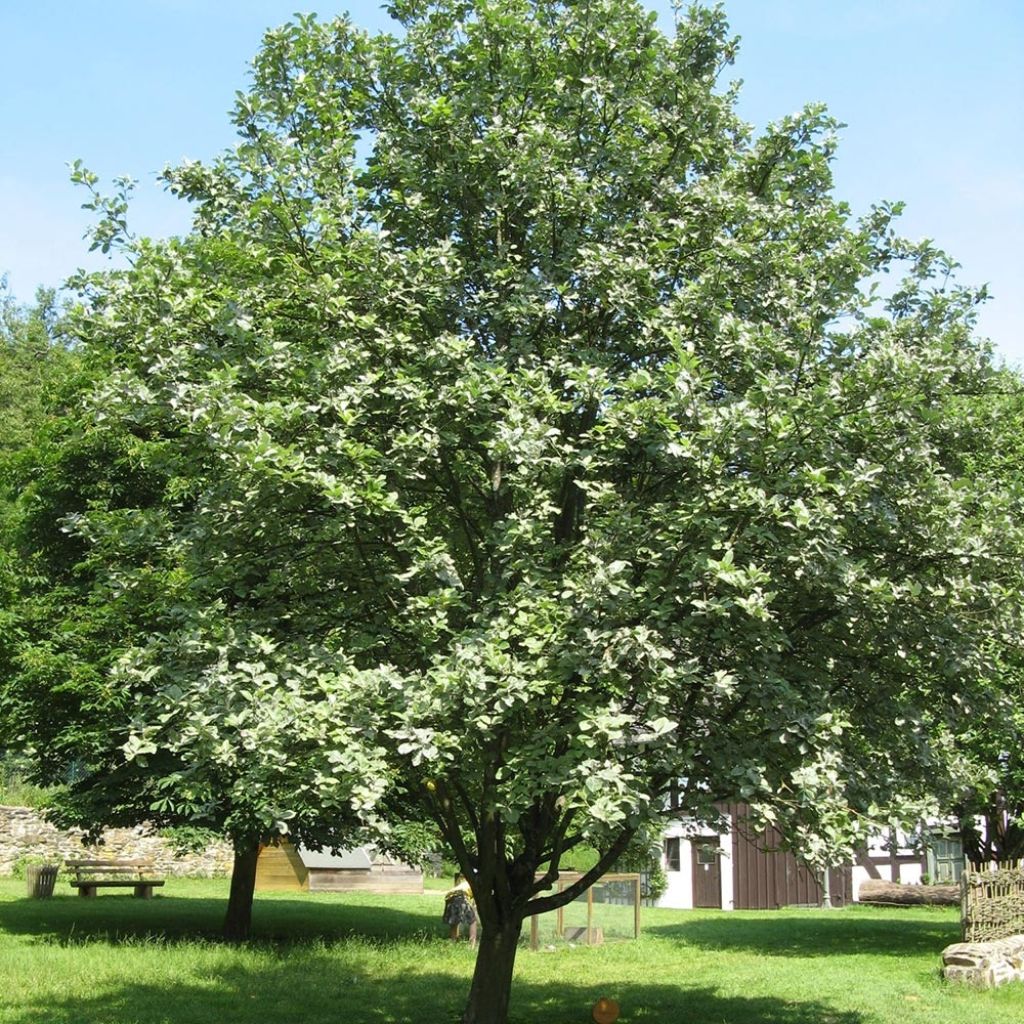

Sorbus aria
Sorbus aria
Sorbus aria
Common Whitebeam
Why not try an alternative variety in stock?
View all →This plant carries a 24 months recovery warranty
More information
We guarantee the quality of our plants for a full growing cycle, and will replace at our expense any plant that fails to recover under normal climatic and planting conditions.
Oversize package: home delivery by special carrier from €6.90 per order..
Express home delivery from €8.90.
Does this plant fit my garden?
Set up your Plantfit profile →
Description
The Sorbus aria, also known as the Whitebeam or Whitebeam tree, is a small bush with ornamental and berry-bearing value. It has beautiful foliage, with dark green leaves that are velvety and silver on the underside, capturing light and attention. Its nectar-rich flowers appear in spring and are composed of pretty white clusters. They are followed by small clusters of red-orange berries that are highly appreciated by birds and edible for humans. This hardy tree thrives in drought, heat, and limestone soils. Its velvety leaves also tolerate urban pollution.
The Whitebeam belongs to the Rosaceae family. The Sorbus aria is native to the southern slopes of central, western, and southern Europe. This species is found as far south as Sweden and Great Britain. It is a deciduous tree that quickly reaches 15 m (49ft) in height and 8 m (26ft) in width. The Sorbus aria has an oval, columnar habit that becomes rounded with age. The deciduous leaves, measuring from 8 to 14 cm (3 to 6in), are ovate and nearly round, with a shiny dark green, wavy upper surface and a silver and velvety underside, giving the tree a sparkling appearance in the wind. Flowering occurs in May-June, with small white flowers measuring 1.5 cm (1in) gathered in terminal clusters. They are followed by red-orange fruits measuring 1.2 cm (1in), with a mealy pulp that birds love. They can also be eaten over-ripe or cooked as jams and spirits. Its bark is brownish-grey, and in young specimens, it is both greyish and covered in lenticels.
Plant the whitebeam tree in any soil, from moist to dry, acidic to alkaline. It will thrive in both full sun and partial shade. This small tree has no specific requirements. As its roots are deep, it is advisable to plant it far from buildings, walkways, and terraces. If necessary, perform pruning before the resumption of growth, eliminating diseased or dead wood and crossing branches. Occasionally, aphids, red spiders, or scale insects may attack it. This tree may also be affected by canker, rot, and bacterial fireblight. The Whitebeam tree is suitable for hedge, shrubbery, and shade. It can also be planted as a standalone tree. It is charming and can be welcomed in small or large gardens. It can be integrated into a countryside hedge, accompanied by tall bushes such as Hippophae rhamnoides, Cotoneaster 'Cornubia', Euonymus myrianthus, or Parrotia persica.
Sorbus means "to drink" in Latin, alluding to the very astringent fruits of the type species that cause thirst. The wood of the Whitebeam is very fine and is used in cabinet-making and turning. Aria, Arie, is the name of a province in ancient Persia, located east of Persia and northwest of India, which corresponds to the region of Herat, a province in western Afghanistan. It is also the botanical name of the Whitebeam. The crossbreeding of the whitebeam with the common pear has given rise to an intergeneric hybrid named x Sorbopyrus auricularis with delicious fruit.
Report an error about the product description
Sorbus aria in pictures
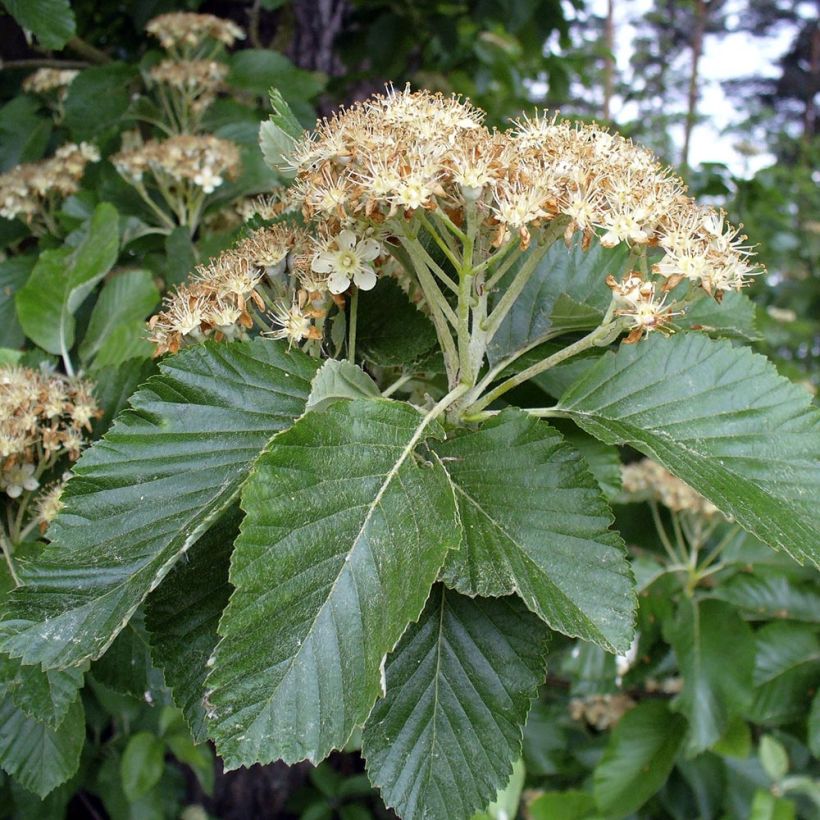

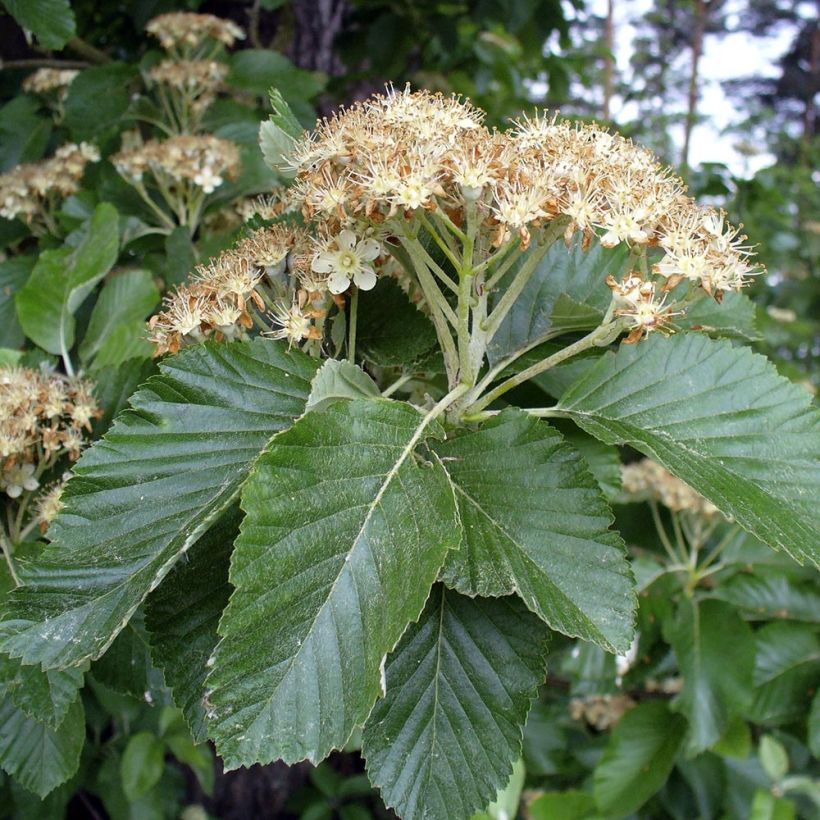

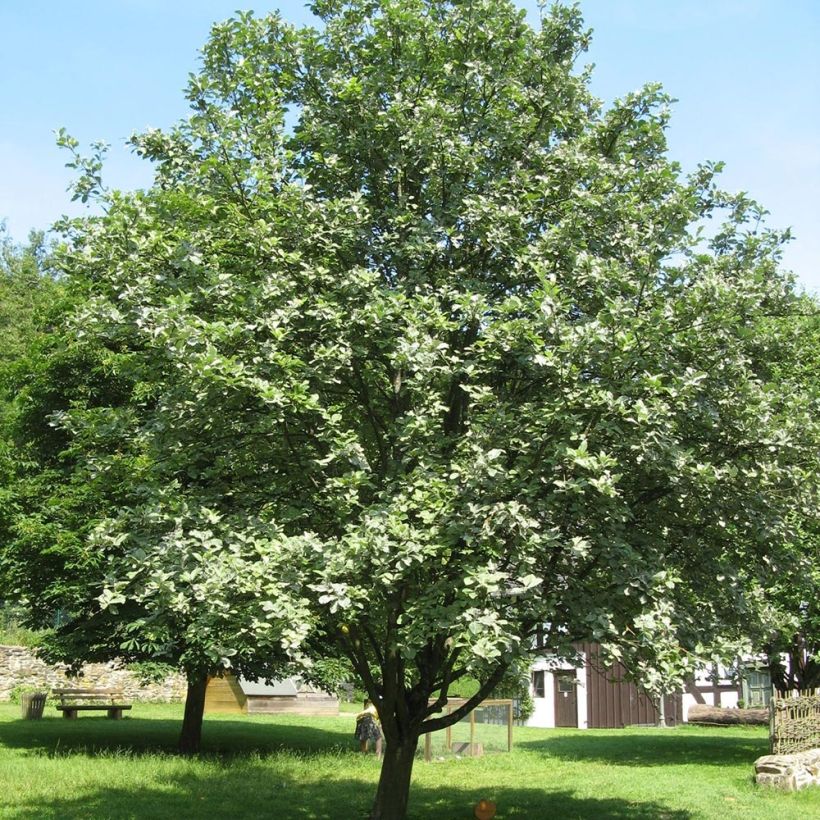

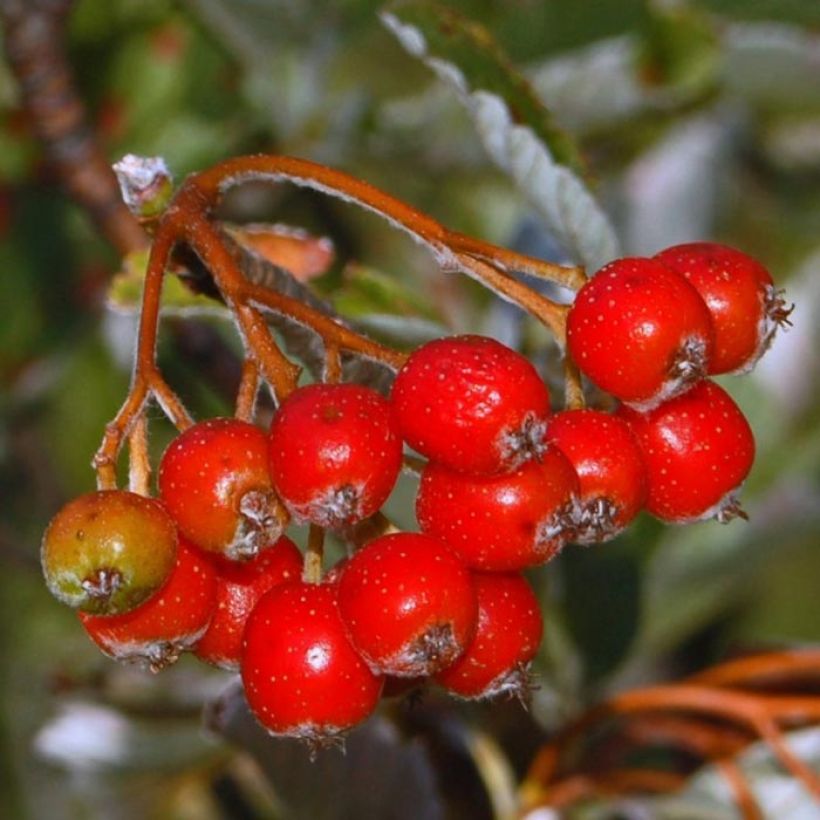

Plant habit
Flowering
Foliage
Botanical data
Sorbus
aria
Rosaceae
Common Whitebeam
Cultivar or hybrid
Other Sorbus - Mountain Ash
Planting and care
Planting period
Intended location
Care
-
, onOrder confirmed
Reply from on Promesse de fleurs
Haven't found what you were looking for?
Hardiness is the lowest winter temperature a plant can endure without suffering serious damage or even dying. However, hardiness is affected by location (a sheltered area, such as a patio), protection (winter cover) and soil type (hardiness is improved by well-drained soil).

Photo Sharing Terms & Conditions
In order to encourage gardeners to interact and share their experiences, Promesse de fleurs offers various media enabling content to be uploaded onto its Site - in particular via the ‘Photo sharing’ module.
The User agrees to refrain from:
- Posting any content that is illegal, prejudicial, insulting, racist, inciteful to hatred, revisionist, contrary to public decency, that infringes on privacy or on the privacy rights of third parties, in particular the publicity rights of persons and goods, intellectual property rights, or the right to privacy.
- Submitting content on behalf of a third party;
- Impersonate the identity of a third party and/or publish any personal information about a third party;
In general, the User undertakes to refrain from any unethical behaviour.
All Content (in particular text, comments, files, images, photos, videos, creative works, etc.), which may be subject to property or intellectual property rights, image or other private rights, shall remain the property of the User, subject to the limited rights granted by the terms of the licence granted by Promesse de fleurs as stated below. Users are at liberty to publish or not to publish such Content on the Site, notably via the ‘Photo Sharing’ facility, and accept that this Content shall be made public and freely accessible, notably on the Internet.
Users further acknowledge, undertake to have ,and guarantee that they hold all necessary rights and permissions to publish such material on the Site, in particular with regard to the legislation in force pertaining to any privacy, property, intellectual property, image, or contractual rights, or rights of any other nature. By publishing such Content on the Site, Users acknowledge accepting full liability as publishers of the Content within the meaning of the law, and grant Promesse de fleurs, free of charge, an inclusive, worldwide licence for the said Content for the entire duration of its publication, including all reproduction, representation, up/downloading, displaying, performing, transmission, and storage rights.
Users also grant permission for their name to be linked to the Content and accept that this link may not always be made available.
By engaging in posting material, Users consent to their Content becoming automatically accessible on the Internet, in particular on other sites and/or blogs and/or web pages of the Promesse de fleurs site, including in particular social pages and the Promesse de fleurs catalogue.
Users may secure the removal of entrusted content free of charge by issuing a simple request via our contact form.
The flowering period indicated on our website applies to countries and regions located in USDA zone 8 (France, the United Kingdom, Ireland, the Netherlands, etc.)
It will vary according to where you live:
- In zones 9 to 10 (Italy, Spain, Greece, etc.), flowering will occur about 2 to 4 weeks earlier.
- In zones 6 to 7 (Germany, Poland, Slovenia, and lower mountainous regions), flowering will be delayed by 2 to 3 weeks.
- In zone 5 (Central Europe, Scandinavia), blooming will be delayed by 3 to 5 weeks.
In temperate climates, pruning of spring-flowering shrubs (forsythia, spireas, etc.) should be done just after flowering.
Pruning of summer-flowering shrubs (Indian Lilac, Perovskia, etc.) can be done in winter or spring.
In cold regions as well as with frost-sensitive plants, avoid pruning too early when severe frosts may still occur.
The planting period indicated on our website applies to countries and regions located in USDA zone 8 (France, United Kingdom, Ireland, Netherlands).
It will vary according to where you live:
- In Mediterranean zones (Marseille, Madrid, Milan, etc.), autumn and winter are the best planting periods.
- In continental zones (Strasbourg, Munich, Vienna, etc.), delay planting by 2 to 3 weeks in spring and bring it forward by 2 to 4 weeks in autumn.
- In mountainous regions (the Alps, Pyrenees, Carpathians, etc.), it is best to plant in late spring (May-June) or late summer (August-September).
The harvesting period indicated on our website applies to countries and regions in USDA zone 8 (France, England, Ireland, the Netherlands).
In colder areas (Scandinavia, Poland, Austria...) fruit and vegetable harvests are likely to be delayed by 3-4 weeks.
In warmer areas (Italy, Spain, Greece, etc.), harvesting will probably take place earlier, depending on weather conditions.
The sowing periods indicated on our website apply to countries and regions within USDA Zone 8 (France, UK, Ireland, Netherlands).
In colder areas (Scandinavia, Poland, Austria...), delay any outdoor sowing by 3-4 weeks, or sow under glass.
In warmer climes (Italy, Spain, Greece, etc.), bring outdoor sowing forward by a few weeks.

































